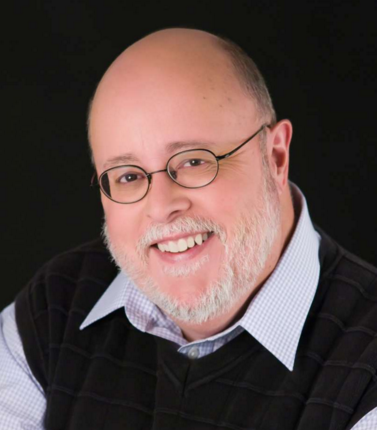How much should it cost to ride mass transit? Are our fares too high? Would lower fares increase ridership? If so, why not make the trains free?

As I’ve noted any number of times, fares on Metro-North in Connecticut are among the highest commuter fees in the country.
That’s because our state’s subsidy is the lowest — about 24 percent, compared to a 50 percent fare subsidy on the Long Island Railroad. Of course, Hartford’s attitude is that everyone in Fairfield County is a millionaire and can afford to pay more.
Ironically, every time there’s a fare increase, ridership doesn’t go down — it goes up. Why? Because the travel alternatives, especially going into New York, are few and all of them are getting worse. Metro-North has a captive audience. Commuters have no choice but to take the train.
Fare subsidies are much higher on the Danbury and Waterbury branch lines and Shore Line East where ridership is lighter compared to the mainline. But service is also less frequent, which might counter those who think lower fares would attract more passengers: cheap fares and poor service aren’t what we want.
Of course, few passengers on Metro-North actually pay “full fare.” Off-peak riders get a 25 percent discount as do members of the military on all trains. Seniors and the disabled ride for half price as do monthly commuters.
While I understand daily commuters think they deserve a break, they also place the greatest strain on the system over the shortest number of hours. Aside from the frequency of their travel, one could argue they should pay a premium and not receive a 50 percent discount.
Of course, the fares are the same whether you’re rich or poor, which is why some have started asking for a “fairer fare,” one based on a rider’s ability to pay.
In New York City, where subways and buses cost $2.75, there are price breaks for seniors (50 percent) and even all-you-can-ride monthly passes.
But starting in January, those living below the poverty line (income of $25,000 for a family of four) will qualify for a 50 percent discount MetroCard. Some 800,000 residents could be eligible for the plan. New York Mayor Bill De Blasio says the $106 million subsidy would be better carried by rich taxpayers, not the rest.
Similar discounts for the poor have worked well in Seattle and Toronto, hometown of the new chief of New York’s subways, Andy Byford.
Proponents argue that mobility is an essential right and if you want to get people out of poverty, they’ve got to be able to afford to get to their job.
So, why not free mass transit?
That’s what they’ve just launched in Estonia in an effort to fight traffic and air pollution. Skeptics say it will help fight neither, but will only replace walking with tram rides.
One Connecticut lawmaker once proposed free rides for all seniors. But I don’t think the fare is the reason seniors don’t take buses. It’s the service and fears for their safety.
But all such “free” service begs the question of who is really paying for it — the taxpayers. As with our “free” highways (the ones without tolls), I think it’s much fairer to ask those who use the service to help pay for it.
____________________
Cameron on Trains
- One Country Has Almost 2/3 of High Speed Rail Lines, Has 4X the U.S. Transport Budget: Cameron on Transportation (Oct. 1)
- On Metro-North (and Other Commuter Lines) ‘On Time’ can mean Six Minutes Late (Sept. 24, 2016)
- These Are a Few of My Favorite Hacks for Grand Central: Cameron on Transportation (Sept. 10)
- Train Ticket Scofflaws Avoid Eye Contact With Conductors and Are Seldom Challenged: Cameron on Transportation (June 4)
- How to Save What You Can as the Flood of Train Prices Rises Around You: Cameron on Transportation (April 5)
- Big Brother Looking Over Your Shoulder as You Travel — Cameron on Transportation (March 19)
- Where an American Railroad Is Making a Profit: Cameron on Transportation (March 15)
- Metro-North Commuting ‘Like Getting Hit With a 2-by-4’ — Cameron on Transportation (Feb. 18)
- Hudson River Rail Tunnels Shoulda, Coulda Been Done By Now: Cameron on Transportation (Feb. 11)
- Don’t Blame Gov for Transport Project Delays, Blame the Legislature: Cameron on Transportation (Feb. 7)
- State Transportation Chief Describes Service Cuts, Rail Fare Hikes Coming Soon Unless Alternate Funding Found (Jan. 26)
- AAA Poll: Plurality of CT Drivers, But Not a Majority, Say Tolls Are Best Way to Finance Transportation (Jan. 23)
- CT’s Prospects Get Ever Darker for Transport Funding, Even for Maintenance and Plowing: Cameron on Transportation (Jan. 2)
____________________
Jim Cameron has been a Darien resident for more than 25 years. He is the founder of the Commuter Action Group and also serves on the Darien RTM and as program director for Darien TV79. The opinions expressed in this column, republished with permission of Hearst CT Media, are only his own. You can reach him at CommuterActionGroup@gmail.com.


Pingback: Amtrak Has Been Failing Spectacularly in Operating CT Trains: Cameron on Transportation - DarieniteDarienite